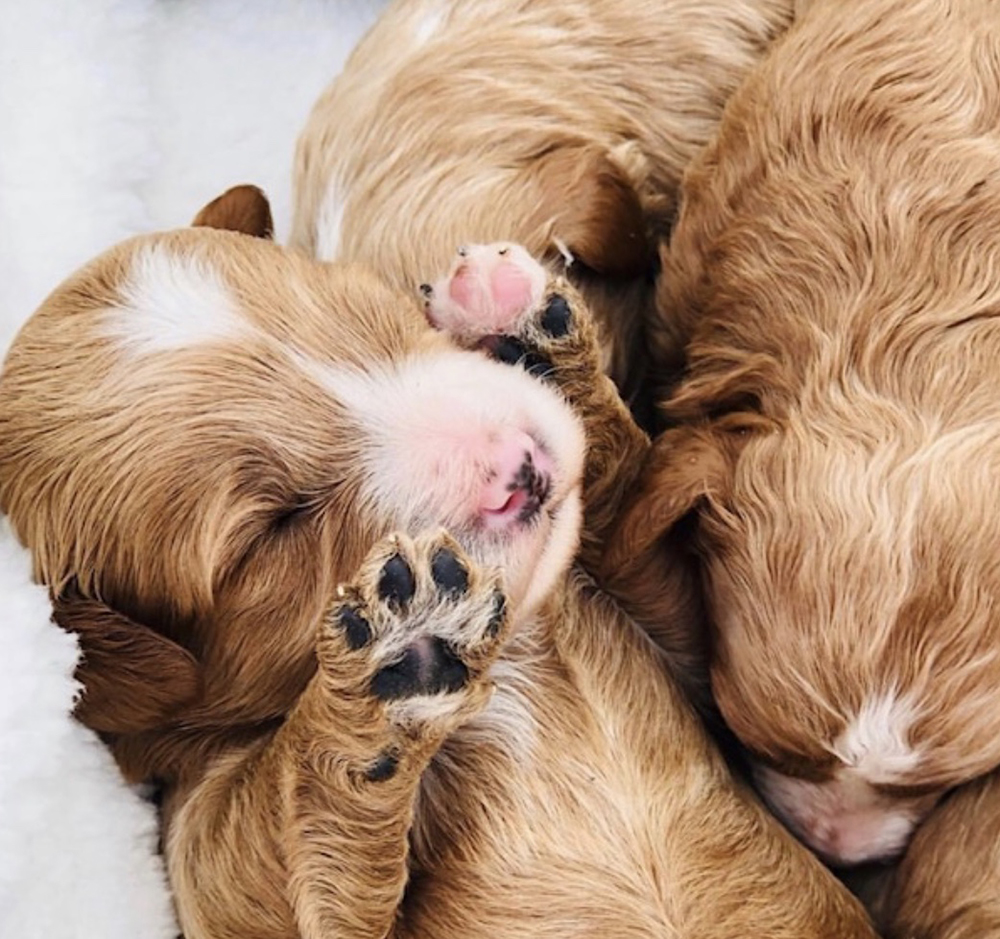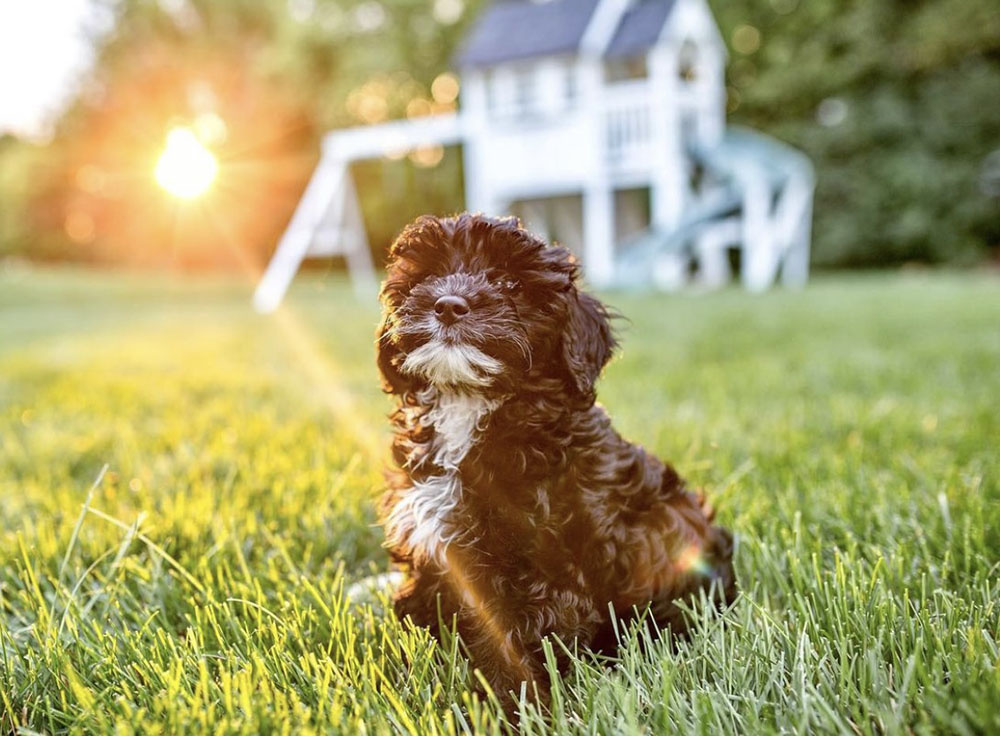Quick Answer: What’s the Most Effective Natural Flea Control?
If you’re looking for natural flea control, the best approach combines several methods together: giving fresh garlic internally, using essential oils like cedarwood and geraniol on your dog’s coat, keeping up with regular cleaning around your home, and maintaining your dog’s overall health through good nutrition. While these natural methods are much safer with fewer side effects, they work best when you’re dealing with prevention or mild to moderate flea problems – not severe infestations. You’ll likely need to try a few different approaches to find what works best for your specific dog and situation.
Our Philosophy: Natural Methods First
At Maple Hill Doodles, we follow a comprehensive holistic breeding program that prioritizes natural methods for flea and tick control. As natural rearing breeders, we lean heavily towards using natural approaches first – especially when you’re dealing with prevention or mild to moderate flea situations.
Now, we’ll be honest with you: natural methods do require more patience than just applying a chemical treatment. You’ll probably need to experiment a bit to find what works for your individual dog. But here’s the thing – they offer significant safety advantages over prescription medications, and we think that’s worth the extra effort.
The beauty of natural methods is that they work with your dog’s immune system and create an environment that parasites just don’t like, rather than poisoning the pests with neurotoxins that can also affect your pet.
Table of Contents
- Internal Natural Flea and Tick Prevention Methods
- External Natural Flea Treatments for Dogs
- Environmental Flea Control: Yard and House Treatment
- Holistic Dog Health for Flea Prevention
- Seasonal Flea and Tick Prevention Tips
- How Long Do Natural Flea Treatments Take to Work?
- When to Consider Prescription Flea Medication
- Natural Flea Control FAQs
Internal Natural Flea and Tick Prevention Methods
Building resistance from the inside out is one of the smartest long-term strategies you can use for natural flea and tick control. Think of it this way: these internal supplements work by changing how your dog smells to parasites, creating an environment that fleas and ticks just don’t find appealing.
Fresh Garlic: The Time-Tested Approach
You might have heard people say garlic is toxic to dogs, but here’s the truth: fresh garlic in the right amounts is actually safe and really effective. Fresh garlic contains sulfur compounds that “support skin resilience and a balanced skin microbiome, making it tougher for parasites to thrive” and “alter the odor of your dog’s skin and discourage pests”.
Proper Garlic Dosage:
- “You can safely give your pet 1/4 clove of garlic per every 10 pounds of body weight”
- “A good rule of thumb would be no more than 1/2 clove per 20 pounds of body weight daily, with a maximum of 2 cloves for any size dog”
- Always give garlic with food so that it won’t irritate the gut lining
Important Garlic Guidelines:
- Use organic raw garlic, and it should be freshly chopped 15 minutes before feeding
- Fresh garlic is essential – dried or powdered forms are much less effective (seriously, don’t waste your money on garlic powder)
- The active compounds in garlic are most potent for about 8 hours after chopping
- Never use garlic on dogs with anemia or blood clotting disorders
Apple Cider Vinegar Addition:
Another simple trick? Add about a tablespoon of apple cider vinegar to their food per day – it also helps prevent fleas
- You can add it to their water bowl too (1 tablespoon per quart of water)
- It helps create a less attractive internal environment for parasites

External Natural Flea Treatments for Dogs
Essential Oil Flea and Tick Repellents
Here’s where things get really interesting – and backed by solid science! Recent research published in peer-reviewed journals strongly supports using essential oils for flea and tick control. A 2024 study confirmed “the effectiveness of essential oils for practical use as tick and flea repellents and eliminators” and found that “essential-oil-based pharmaceutical can replace chemical pesticides and provide benefits for both consumers and the environment.”
Let’s talk about which ones actually work:
Cedarwood Oil: This one’s impressive – USDA Agricultural Research Service studies show cedarwood oil works as effectively as DEET against black-legged tick nymphs. Yes, you read that right!
- Application: Mix 10-15 drops per ounce of water for a spray
- Collar treatment: Put 2-3 drops on a bandana weekly
- Safe for frequent reapplication (unlike those chemical treatments)
Geraniol: Recent 2024 research published in ScienceDirect shows geraniol has “high repellent efficacy” and may be “potentially safer for both human and animal health”
- It actually works better than citronella for long-lasting protection
- You can find this in some commercial natural products
- Great for both preventing fleas and dealing with active infestations
Turmeric Oil: Scientific studies show that “turmeric oil was both able to prevent a climbing response by ticks and had a longer residual activity than other oils” in controlled laboratory testing. Pretty cool, right?
Rose Geranium Oil:
- Mix 2 tablespoons of almond oil with Rose Geranium Oil – then dab 2-3 drops on your dog’s collar or behind their ears
- This one’s particularly effective against ticks
- Reapply to collar every 3-4 days
Other Effective Essential Oils You Can Try:
- Peppermint: Works by blocking the odors that attract fleas and ticks
- Eucalyptus: A natural insect deterrent
- Lemongrass: Effective, but heads up – it might temporarily discolor light-colored fur
- Rosemary: Safe and smells great (your dog will smell like an Italian restaurant!)
- Always dilute before applying to your dog’s skin – never use them straight
- Never, ever use tea tree oil on cats
- Start with lower concentrations and gradually increase
- Watch for any skin reactions or sensitivities – every dog is different
Natural Flea Shampoo and Bathing Methods
Pre-Bath Flea Combing:
Here’s a pro tip: always use a flea comb before you bathe your dog, not after
- Use a high-quality metal flea comb (worth the investment!)
- Focus on the areas where fleas love to hang out: base of tail, behind ears, armpits, belly
- Honestly, human lice combs often work better than the ones at pet stores
- During flea season, make this a daily habit
Natural Shampoo Protocol:
Here’s our tried-and-true bathing routine:
- Add Neem Oil: Mix 2-3 drops into your natural dog shampoo
- Work it in thoroughly and let it sit for 5 minutes (set a timer – it’s worth the wait)
- Rinse completely with warm water
- Apple Cider Vinegar Final Rinse: Mix equal parts ACV and water
- Don’t rinse out the ACV – it keeps working as a repellent after the bath
Between-Bath Treatments:
Apple Cider Vinegar Spray:
- Equal parts ACV and water in spray bottle
- You can even spray apple cider vinegar on your dog from a spray bottle before you go into dog parks
- Natural pH balancer and insect repellent
- Safe for daily use, avoiding eyes and open wounds
Neem Oil Spot Treatment:
- Mix 2 drops neem oil with 1 tablespoon coconut oil
- Apply to key areas: behind ears, between shoulders, base of tail, armpits, belly
- Completely natural and non-toxic
- Safe for frequent reapplication without waiting periods
Environmental Flea Control: Yard and House Treatment
Controlling fleas in your dog’s environment is as important as treating your pet directly. Fleas spend most of their lifecycle off your dog, so environmental management is crucial.
Indoor Flea Control and Prevention
Deep Cleaning Protocol:
- Hot water washing: All pet bedding at 140°F+ kills all flea life stages
- High heat drying: 30+ minutes in dryer ensures complete elimination
- Thorough vacuuming: Every 2-3 days, focusing on pet areas, under furniture, along baseboards
- Steam cleaning: Use on carpets when possible for additional heat treatment
Natural Indoor Treatments:
- Essential oil carpet powder: Mix baking soda with cedarwood and peppermint oils
- Vacuum regularly: The vibration actually stimulates flea eggs to hatch, then removes them
- Wash throw rugs weekly during flea season
- Cedar chips in pet sleeping areas as natural deterrent
Natural Yard Flea and Tick Treatment
Natural Yard Treatments:
- Beneficial nematodes: Microscopic worms that consume flea larvae in soil
- Cedar chips: Natural repellent in high-traffic pet areas
- Essential oil yard sprays: Cedarwood and geraniol mixtures for perimeter treatment
- Natural soil amendments: Lime can help reduce soil pH in areas where fleas develop
The Environmental Protection Agency (EPA) recommends controlling fleas and ticks around your home by keeping grass mowed, removing leaf litter, and creating a barrier between wooded areas and your lawn.
Environmental Modifications:
- Improve drainage to reduce humidity where fleas develop
- Increase air circulation with strategic landscaping
- Remove debris piles where fleas can complete their lifecycle
- Plant natural repellents: Lavender, mint, rosemary around pet areas
- Keep grass short to reduce flea habitat
- Create sunny, dry areas where your dog spends time – fleas prefer shade and humidity

Holistic Dog Health for Flea Prevention
The foundation of natural flea and tick control is maintaining your dog’s optimal health. Healthy dogs with strong immune systems are naturally less attractive to parasites and better able to resist infestations.
Raw Diet and Nutrition for Natural Flea Resistance
Species-Appropriate Diet:
The most important factor in building natural resistance is feeding a biologically appropriate diet. At Maple Hill Doodles, we follow a comprehensive approach to nutrition that supports immune function and creates an internal environment less attractive to parasites.
For detailed information about optimal canine nutrition, see our complete guide to the Prey Model Raw Diet feeding plan. This approach provides:
- Complete amino acid profiles for immune function
- Natural enzymes that support digestion and nutrient absorption
- Appropriate ratios of omega fatty acids for healthy skin and coat
- No artificial preservatives, colors, or fillers that can compromise health
Lifestyle Factors That Build Resistance
Regular Exercise and Fresh Air:
- Daily outdoor exercise supports overall immune function
- Fresh air and sunshine provide natural vitamin D
- Physical fitness helps dogs better resist parasite infestations
- Stress reduction through adequate exercise improves immune response
Proper Rest and Stress Management:
- Secure, comfortable sleeping areas reduce stress
- Consistent routines help minimize anxiety
- Adequate sleep supports immune system recovery
- Low-stress environments make dogs less attractive to parasites
Grooming and Maintenance:
- Daily brushing with quality slicker brush improves skin health
- Regular flea combing provides early detection and removal
- Skin health maintenance creates better barrier against parasites
- Ear cleaning prevents secondary infections from scratching
Seasonal Flea and Tick Prevention Tips
Understanding when fleas and ticks are most active helps you prepare and intensify your natural prevention efforts.
Peak Flea and Tick Seasons
High Activity Periods:
- Late summer (August-September): Peak flea reproduction when temperature and humidity are highest
- Spring emergence: Tick activity begins as temperatures consistently reach 45°F+
- Fall resurgence: Second tick activity surge before winter dormancy
- Warm, humid conditions: Ideal for flea development year-round in some climates
According to the Centers for Disease Control and Prevention (CDC), fleas prefer warmer and more humid months, but if there is an animal to feed on, fleas can survive year-round. The CDC emphasizes the importance of checking your pets for ticks daily, especially after they spend time outdoors.
Flea Season Timeline and Preparation
Early Summer Preparation:
- Begin intensive internal supplementation (garlic, herbs)
- Increase bathing frequency with natural treatments
- Start environmental management protocols
- Intensify daily flea combing routine
Peak Season Management:
- Daily monitoring and flea combing
- Weekly essential oil applications
- Frequent environmental cleaning
- Monitor for early signs of infestation
Fall and Winter Maintenance:
- Continue indoor environmental control
- Reduce but don’t eliminate preventive measures
- Focus on immune system support through nutrition
- Prepare for next season’s prevention cycle
Ohio Flea and Tick Pressure by Region
Regional Variations in Parasite Pressure:
It’s important to note that certain parts of the country have significantly more problems with fleas and ticks than others. Warm, humid regions like the Southeastern United States and Gulf Coast areas face year-round flea and tick pressure, making natural control more challenging. Areas with mild winters, high humidity, and dense deer populations will typically require more intensive and consistent natural approaches.
Conversely, regions with more moderate climates and distinct seasonal changes – such as the areas around Cleveland, Pittsburgh, and Columbus – typically experience lower year-round parasite pressure. In these regions, fleas and ticks follow more predictable seasonal patterns, with natural winter die-off providing a break in the lifecycle. This makes natural prevention methods particularly effective when started in early spring before parasite populations build up.
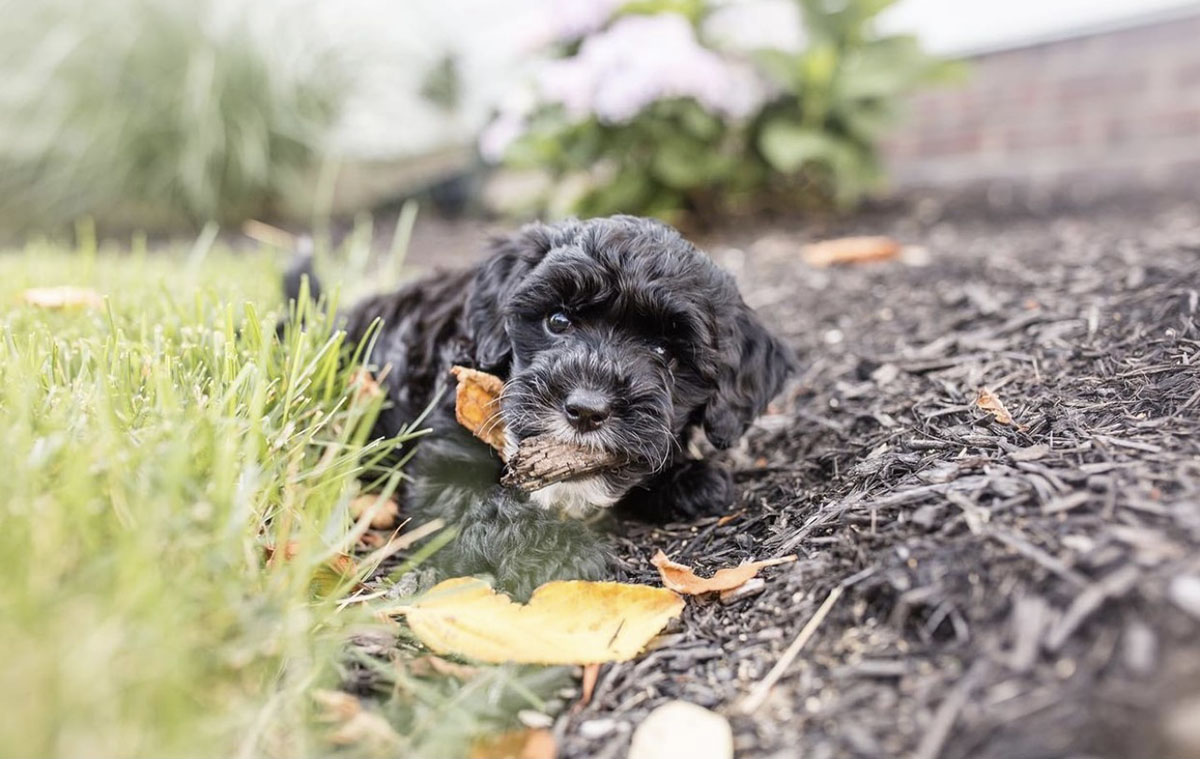
How Long Do Natural Flea Treatments Take to Work?
Understanding realistic timelines helps you stay committed to natural methods and know when to adjust your approach.
Natural Flea Treatment Effectiveness Timeline
Week 1-2:
- Some immediate relief from itching with ACV and essential oil applications
- Beginning of internal supplement effectiveness
- Environmental cleaning reduces flea reproduction
- Daily combing removes existing adult fleas
Week 2-4:
- Noticeable reduction in flea activity if methods are working for your dog
- Improved skin condition from natural treatments
- Internal supplements begin changing skin scent profile
- Environmental population should show significant decline
Week 4-6:
- Substantial control achieved if natural approach is effective
- Maintenance routine established
- Prevention protocols working well
- Long-term resistance beginning to develop
Individual Variation in Effectiveness
Factors Affecting Success:
- Dog’s individual immune system strength and responsiveness
- Severity of initial infestation – mild cases respond much better
- Environmental flea pressure from climate and surroundings
- Consistency of application – sporadic treatment significantly reduces effectiveness
- Combination of methods – multiple approaches work better than single treatments
- Overall health status – healthier dogs respond better to natural methods
Signs Natural Methods Are Working:
- Reduced scratching and skin irritation
- Fewer live fleas visible during combing
- Less flea dirt (black specks) in pet’s coat
- Improved coat condition and skin health
- Better sleep and overall comfort for your dog
- Decreased jumping flea activity in living areas
When to Try Different Natural Approaches:
- If no improvement seen within 2-3 weeks of consistent application
- When one essential oil doesn’t seem effective (try different ones)
- If your dog shows sensitivity to a particular treatment
- When environmental pressure seems higher than methods can handle
When to Consider Prescription Flea Medication
Important Disclaimer: As natural rearing breeders, we always prefer holistic treatments as our first choice and believe strongly in supporting your dog’s natural defenses. However, we also understand there are times when prescription treatments might be needed, and it becomes necessary to weigh the risk versus reward with your veterinary team.
While we strongly advocate for natural methods first, we believe in complete transparency about when additional support might be necessary.
Situations Where Natural Methods May Not Be Sufficient:
- Severe infestations where your dog’s comfort and health are significantly compromised
- Dogs with flea allergy dermatitis who develop serious skin reactions and secondary infections
- Multi-pet households with established infestations across multiple animals
- High parasite pressure areas where environmental load is overwhelming natural defenses (particularly common in the Southeastern US, Gulf Coast, and other humid, warm regions)
- Dogs with compromised immune systems who can’t mount adequate natural resistance
- Emergency situations where immediate relief is critical for the animal’s welfare
Making the Decision:
After giving natural approaches a thorough trial (4-6 weeks of consistent, proper application), each owner working with their trusted veterinarian will need to decide what methods are most appropriate for their unique situation.
If Natural Methods Haven’t Provided Adequate Relief:
Should you and your veterinarian decide that prescription treatments are necessary for your dog’s wellbeing:
- Understand the trade-offs: While prescription treatments may be more immediately effective, they are neurotoxins with potential serious side effects
- Consider your dog’s age: Young puppies and senior dogs are especially vulnerable to synthetic medication toxicity
- Be aware of potential side effects: These can include seizures, skin reactions, autoimmune issues, neurological problems, and digestive upset
- Discuss timing: Many owners use prescription treatments as short-term interventions to gain control, then transition back to natural maintenance
- Monitor closely: Watch for any adverse reactions and report them to your veterinarian immediately
Our Philosophy on Balanced Care:
We believe the goal should always be keeping your dog healthy, comfortable, and thriving while minimizing exposure to synthetic toxins whenever possible. Sometimes this means using prescription treatments temporarily to address a severe situation, then returning to natural methods for long-term maintenance and prevention.
Important Note: This decision should always be made in partnership with a veterinarian who understands both your preference for natural methods and your dog’s individual health needs. There’s no shame in using prescription treatments when your dog’s welfare requires it – the key is making informed decisions about risks versus benefits.
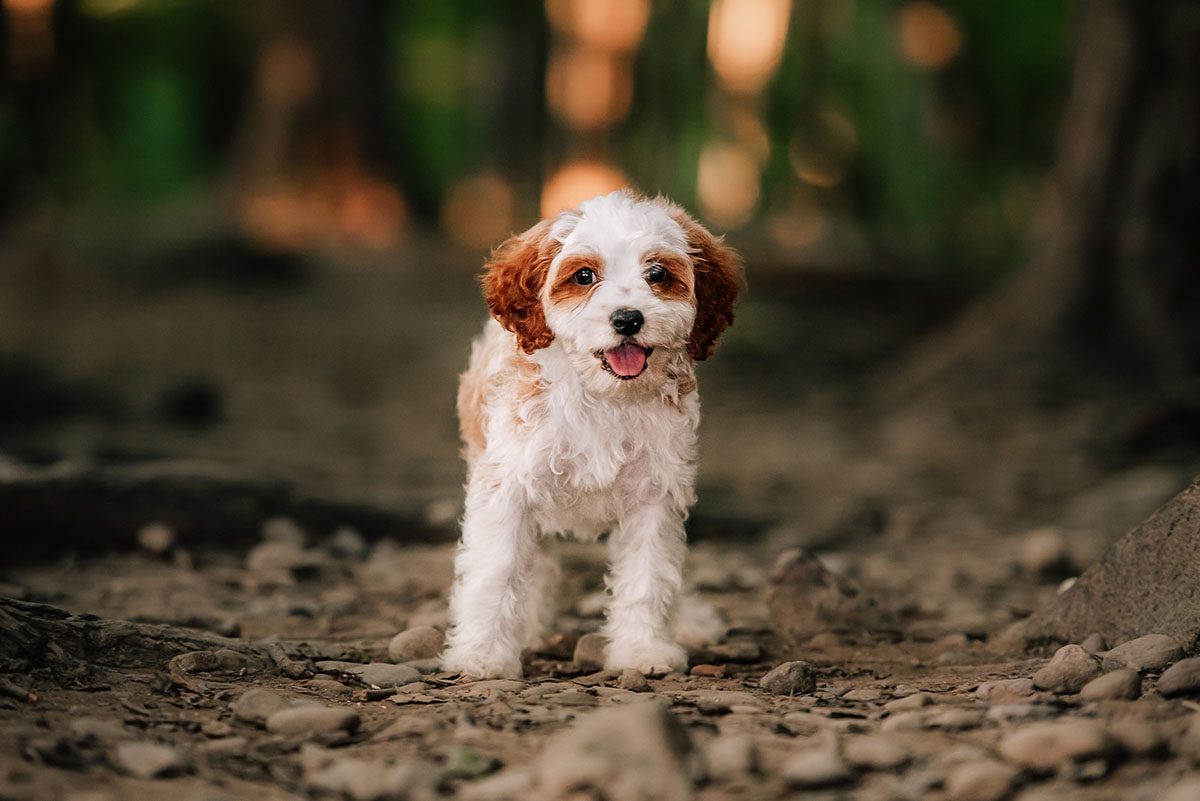
Professional Resources and Expert Insights
Dr. Karen Becker, a renowned wellness veterinarian, emphasizes in her comprehensive flea control video that parasites are naturally attracted to the weakest hosts. Her research-backed approach focuses on:
- Building robust immune systems as the primary defense against all parasites
- Addressing underlying health issues that make dogs more attractive to fleas and ticks
- Understanding the difference between preventive and deterrent approaches
- Creating effective homemade deterrents using natural ingredients
- Proper nutrition as the foundation of long-term parasite resistance
- Environmental management as equally important as direct treatment
Natural Flea Control FAQs
How long should I try natural methods before considering other options?
Natural methods work best for prevention and mild to moderate infestations. Give them 2-3 weeks with consistent application. If you don’t see improvement, try a different combination of natural methods. For severe infestations or if your dog is suffering significantly, consult your veterinarian about all available options.
Can I use these methods on very young puppies?
Most natural treatments are much safer than prescription medications for puppies, but always consult your veterinarian first. Puppies under 12 weeks should have limited exposure to essential oils, but gentle methods like flea combing and diluted ACV rinses are generally safe. Avoid garlic in very young puppies.
What’s the most cost-effective natural approach?
Daily flea combing, apple cider vinegar (both internal and external), and regular hot water washing of bedding provide excellent results for minimal cost. Fresh garlic is also very economical. Essential oils have higher upfront costs but small amounts last a long time.
How do I know if natural methods are working?
Look for: reduced scratching and itching, fewer visible fleas during combing, less flea dirt in the coat, improved skin condition, and better overall comfort. You should see some improvement within 1-2 weeks of consistent application.
Can natural methods completely prevent fleas and ticks?
Natural methods can be very effective for prevention and managing mild infestations, but effectiveness varies by geographic location. Some regions have much higher flea and tick pressure than others, which can make natural control more challenging. No method – natural or prescription – provides 100% prevention in all situations and locations.
Which essential oils are most effective?
Based on scientific studies, cedarwood oil and geraniol show the strongest research support. Rose geranium oil is particularly effective for ticks. Turmeric oil shows promise in laboratory studies. Peppermint, eucalyptus, and rosemary are also beneficial. Always dilute properly and test on a small area first.
Is garlic really safe for dogs?
Fresh garlic in appropriate doses is generally safe for most healthy dogs. Follow dosing guidelines carefully: no more than 1/4 clove per 10 pounds of body weight, with a maximum of 2 cloves for any size dog. Never use garlic on dogs with anemia, blood clotting disorders, or scheduled for surgery. Always give with food.
How often should I apply natural treatments?
Most natural treatments can be applied daily if needed, unlike prescription medications that require waiting periods. Start with every other day and adjust based on your dog’s response and the severity of the flea situation.
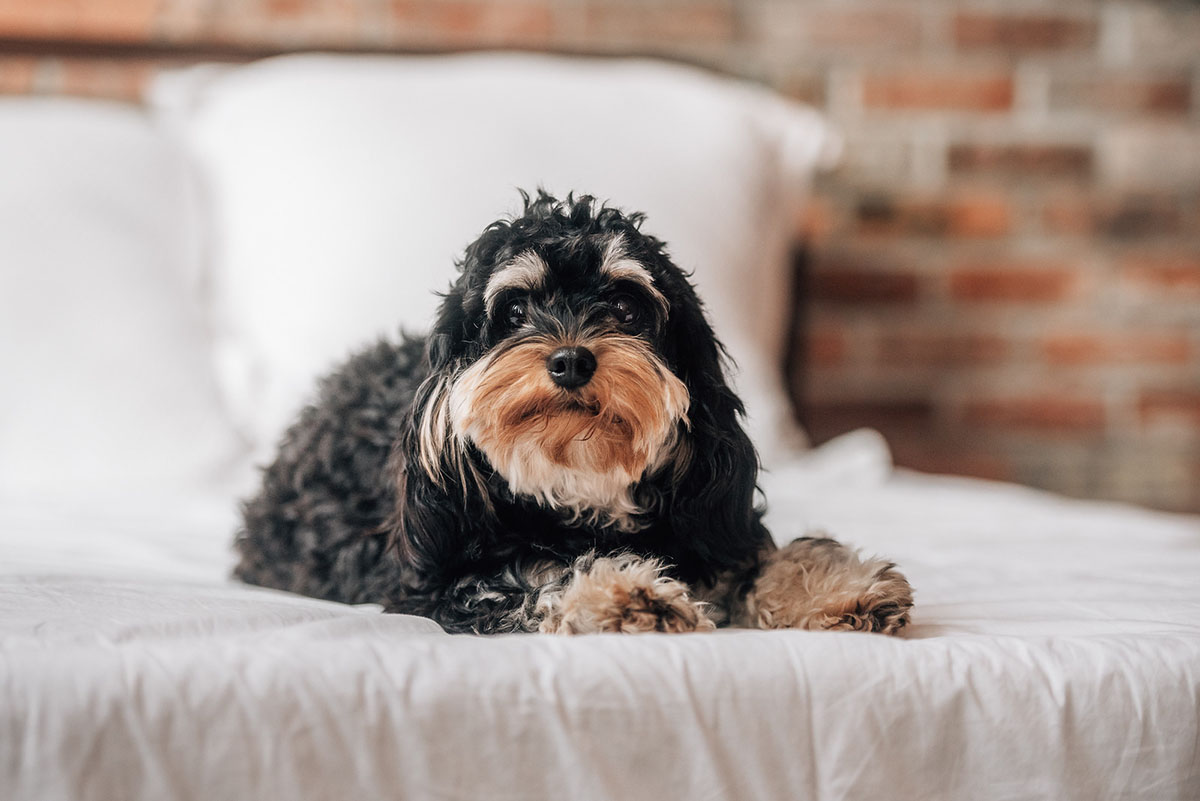
Final Thoughts: A Natural Path to Flea and Tick Control
Natural flea and tick control is most effective when viewed as a comprehensive lifestyle approach rather than just switching to different products. Success comes from combining internal health support, external natural treatments, environmental management, and overall wellness practices.
The natural approach works best when you:
- Commit to consistency in application of multiple methods
- Address your dog’s overall health through optimal nutrition (like our Prey Model Raw Diet approach)
- Use multiple methods simultaneously rather than relying on single treatments
- Maintain realistic expectations about timelines and effectiveness
- Stay vigilant about environmental control
- Work with a veterinarian who understands and supports natural approaches
Most importantly: Each owner working with their trusted veterinarian will need to decide what methods are most appropriate for their unique situation, considering their dog’s health status, the severity of any flea problems, local parasite pressure, and their family’s comfort level with different approaches.
The goal is keeping your dog healthy, comfortable, and thriving while building long-term resistance to parasites through natural means. For most dogs with mild to moderate flea situations, natural methods can provide excellent control while supporting overall health and avoiding the risks associated with synthetic neurotoxins.
Remember that natural methods often require patience and experimentation to find the right combination for your individual dog, but the long-term benefits of supporting your pet’s natural defenses make this approach worthwhile for many families.
At Maple Hill Doodles, we’re committed to sharing proven natural methods that support long-term health and vitality. Every dog is unique, and success comes from finding the right combination of natural approaches for your individual pet’s needs, always in partnership with qualified veterinary guidance.
Related Resources:
- Prey Model Raw Diet Feeding Plan – Complete nutrition guide for optimal health
- Natural Dog Health Remedies – Additional natural health information
- CDC: Preventing Fleas – Centers for Disease Control prevention guidelines
- CDC: Preventing Ticks on Pets – Official CDC tick prevention information
- EPA: Controlling Fleas and Ticks Around Your Home – Environmental Protection Agency guidelines
- American Kennel Club: Flea and Tick Prevention Tips – AKC expert advice
- Cornell University Veterinary Medicine: Flea and Tick Prevention – Research-based veterinary information
Scientific Sources:

